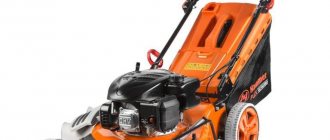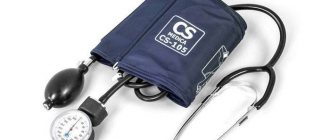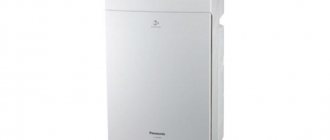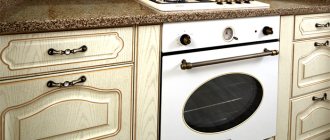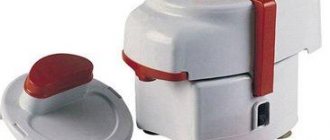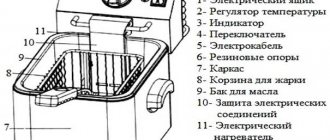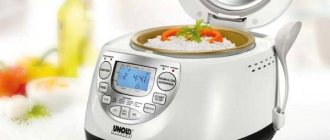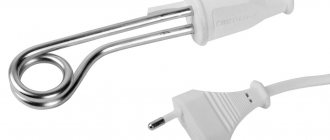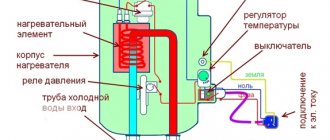Rotary hammers produced by the Japanese company Makita are known for their high quality and are in demand around the world.
They are presented in a wide range on the Russian market - everyone can choose a suitable unit for household minor repair work and for professional activities. In this article we have presented the most popular points, laying out all the pros and cons.
A hammer drill is a percussion tool characterized by the rotational movements of a drill. Using it you can punch holes of the required diameter. The wide variety that exists on the electrical appliances market can confuse even a person with extensive experience. This article will help you make your choice and make the right purchase.
What important characteristics should you pay attention to when choosing a Makita rotary hammer?
If you are puzzled by the purchase of a new rotary hammer and the choice fell on the Makita brand, then you should pay attention to the following technical parameters:
- Power supply. The hammer drill can be wired, networked, wireless and battery-powered.
- Weight. Lightweight (less than 3 kg) are designed for forming small holes. Medium ones (from 3 to 5 kg) are used for chiselling and working in hard materials and reinforced structures. Heavy units (over 5 kg) are capable of punching large holes with a diameter of 8-12 cm.
- Engine location. If it is located horizontally, the main function of the hammer drill is drilling. If vertical - intensive chiselling and drilling.
- Number of modes. Most often, their number varies from one to three. The main options are chiselling, rotary and impact drilling. Fortunately, most Makita rotary hammers are versatile and can handle all three types of work.
- According to the method of fastening the drill. SDS Plus are designed for a drill size not exceeding 30 mm, SDS Max for cartridges of 52 mm.
- Additional technical capabilities: screwdriver function, anti-vibration protective systems, rotation speed adjustment, backlight.
Often the deciding factor for a purchase is price, but it is important to pay attention to the accompanying documentation and equipment.
Mains powered models
Rating of the TOP 5 models with mains power based on customer reviews.
Network hammer drills operate from a 220 V outlet, which makes it possible to increase power. They are inconvenient because they “tie” the user to the outlet and reduce his maneuverability.
Makita HR2470 (2.7 J)
A powerful and reliable hammer drill suitable for a wide range of repair and construction work.
A tool whose technical qualities will be appreciated even by true professionals. The speed control is carried out by a built-in system.
The low level of noise and vibration makes repairs comfortable both for the worker himself and for the people around him. The HR2470 is capable of handling materials such as stone and reinforced concrete.
Specifications:
- Operating modes: drilling, drilling with chiselling, chiselling;
- Cartridge: SDS-Plus;
- Hammer weight: 2.6 kg;
- Device power: 780 W;
- Impact frequency: 4500 beats per minute;
- Drilling diameter (concrete): up to 24 mm.
Advantages
- protected from debris and dust;
- safe to use;
- comfortable to hold;
- there is a reactive torque limiter;
- acceptable price.
Flaws
- hard to hold;
- smells like cheap plastic;
- no adapter included.
Makita HR2630 (2.9 J)
The leader among lightweight corded hammer drills from Makita - it operates in three modes with increased impact energy.
The lightweight HR2630 universal rotary hammer is suitable for most construction work.
It features good ergonomics, which is ensured by thoughtful weight distribution and comfortable rubber handles.
The impact energy is enough to create holes with a diameter of 26 mm.
Specifications
- Operating modes: drilling, chiselling, drilling with chiselling;
- Cartridge: SDS-Plus;
- Hammer weight: 2.8 kg;
- Device power: 800 W;
- Beat frequency: 4600 beats per minute;
- Drilling diameter (concrete): up to 26 mm.
Advantages
- Romanian production;
- sufficient power for both home repairs and more serious work;
- ergonomic handles;
- quiet in operation;
- affordable price.
Flaws
- heats up quickly during operation;
- too big - uncomfortable to hold;
- there is no lubrication in the mechanism.
Makita HR2460 (2.7 J)
The hammer drill is designed for long-term use even in the most difficult conditions.
The HR2460 is a powerful and wear-resistant unit, the internal parts of which are reliably protected from dust and construction debris.
Can be used as a wrench and screwdriver. Maintains speed and torque in reverse mode.
Specifications:
- Operating modes: drilling, drilling and chiselling;
- Cartridge: SDS-Plus;
- Hammer weight: 2.5 kg;
- Device power: 780 W;
- Impact frequency: 4500 beats per minute;
- Drilling diameter (concrete): up to 24 mm.
Advantages
- strong and convenient suitcase for storage included;
- thick cord that does not harden in the cold;
- smooth descent;
- ideal for drilling almost all types of material;
- vibrations during operation are insignificant.
Flaws
- short cord;
- after 30-40 holes made, it heats up;
- unpleasant smell of cheap plastic.
Makita HR2475 (2.7 J)
A lightweight three-mode hammer drill with enough impact force to work with wood, metal and concrete.
Optimal technical characteristics: 1100 rpm and 4500 beats per minute, regulated by smart electronics. At idle, the function is not activated.
The HR2475 comes with a safety clutch, reverse and a built-in torque limiter. Side handle suppresses vibration.
Specifications:
- Operating modes: drilling, drilling with chiselling, chiselling;
- Cartridge: SDS-Plus;
- Hammer weight: 3 kg;
- Device power: 780 W;
- Impact frequency: 4500 beats per minute;
- Drilling diameter (concrete): up to 24 mm.
Advantages
- there is a blockage;
- presence of a storage case;
- comfortable to hold due to the shape of the handle;
- long power cord;
- There is enough power for most repair work.
Flaws
- made in China;
- not very suitable for crowns;
- may seem too heavy for some.
Makita HR2432 (2.2 J)
Three-mode hammer drill with a rigid and convenient bag for collecting dust right during drilling.
The HR2432 rotary hammer is equipped with an independent dust extraction system for cleaning the working area. Professionals will be pleased with the ability to install the bit in 40 positions.
The dust collector is conveniently fixed in one position, even if you have to hold the tool above your head. The rubberized handle fits comfortably in the palm of your hand.
Specifications
- Operating modes: drilling, drilling with chiselling, chiselling;
- Cartridge: SDS-Plus;
- Hammer weight: 3 kg;
- Device power: 780 W;
- Impact frequency: 4500 beats per minute;
- Drilling diameter (concrete): up to 24 mm.
Advantages
- the best option for household repair work;
- spacious dust container;
- affordable price with high technical performance;
- simplicity of design;
- Doesn't make much noise during operation.
Flaws
- may seem heavy for a woman's hand;
- storage case is too bulky;
- Despite the dust collector, it leaves circles of dust on the wall.
Comparison table of the best Makita rotary hammers
| Name | Main characteristics | Price |
| Makita HR4511C | Can drill and chisel at the same time, maximum impact energy is 12.5 joules, power consumption is 1350 watts. | ₽ 55 600 |
| Makita DHR263RF4 | The battery voltage is 18 volts, the power is enough to work with metal and concrete, the maximum impact energy is 2.5 joules. | ₽ 34 659 |
| Makita HR2800 | A power consumption of 800 watts and an impact energy of 2.9 joules is enough for almost any need, especially if we are talking about domestic rather than professional use. | ₽ 13 939 |
| Makita DHR241Z | With three operating modes: drilling, chiselling and drilling with chiselling, the replaceable battery voltage is 18 volts. | ₽ 8 940 |
| Makita M8700 | The power of 710 watts, of course, is not amazing, but it is enough to drill holes with a diameter of 13 mm in steel, 22 mm in concrete and 32 mm in wood. | ₽ 6 765 |
Battery operated devices
Rating of the TOP 5 battery-powered devices in terms of price-quality ratio.
Among rotary hammers from Makita, lithium-ion (Li-lon) batteries, devoid of the “memory effect,” are especially widespread. Their advantage over network ones is independence from the outlet, maneuverability and compact size.
Makita DHR202RF Li-Ion 18 V (1.9 J)
Highly mobile cordless hammer drill with traditional horizontal layout and SDS-Plus type keyless chuck.
The main operating mode of this hammer drill is impact drilling, which allows you to quickly create holes in a material of any density: wood, concrete, reinforced concrete, artificial and even natural stone.
The DHR202RF operates in three modes: classic drilling, impact drilling and chiselling.
Specifications
- Operating modes: drilling, drilling with chiselling, chiselling;
- Cartridge: SDS-Plus;
- Hammer weight: 3.5 kg;
- Impact frequency: 4000 beats per minute;
- Drilling diameter (concrete): up to 20 mm.
Advantages
- autonomous work;
- costs less compared to analogues from other companies;
- durable case included;
- mobility and maneuverability;
- fast charging.
Flaws
- battery discharge;
- small battery capacity included;
- heavy.
Makita DHR202Z 0 box Li-Ion 18 V (1.9 J)
The most suitable option for tile laying work.
The three-mode hammer drill DHR202Z has a chisel rotation function, which is most convenient for laying tiles.
Thanks to the safety clutch, the risk of the tool turning in your hands during operation is minimized.
Supplied without battery or charger, making it best suited for those who already own all their cordless tools.
Specifications
- Operating modes: drilling, drilling with chiselling, chiselling ;
- Cartridge: SDS-Plus;
- Hammer weight: 3.5 kg.
- Impact frequency: 4000 beats per minute;
- Drilling diameter (concrete): up to 20 mm.
Advantages
- good equipment: case, handle and depth gauge;
- low price;
- easy to use;
- fast battery charging: 40 to 45 minutes;
- mobile and easy to store.
Flaws
- the charge quickly drains during chiselling;
- Most configurations come with one battery;
- smells like cheap plastic.
Makita DHR202RFE 3.0Ah x2 case Li-Ion 18 V (1.9 J)
A powerful cordless tool in the mid-price category.
The system is capable of operating in chiselling, drilling and combined modes. The drill is easy to remove thanks to the reverse system.
The DHR202RFE hammer drill is capable of creating holes in concrete with a diameter of up to 2 cm, up to 1.3 cm in metal and 2.6 cm in wood. Includes 2 batteries.
Specifications
- Operating modes: drilling, chiselling .
- Cartridge: SDS-Plus;
- Hammer weight: 3.5 kg;
- Beat frequency: 4000 beats per minute.
- Drilling diameter (concrete): up to 20 mm.
Advantages
- ergonomics and safety;
- power;
- mobility;
- reliability and high quality;
- unification of the gearbox with HR2470.
Flaws
- high price compared to analogues;
- large and old-fashioned case;
- too heavy if held above your head.
Makita DHR242Z 0 box Li-Ion 18 V (2.4 J)
A cordless hammer drill that has proven itself successfully in difficult conditions of a repair or construction site.
The highly functional DHR242Z is power-independent, making it easy to maneuver.
The main advantages of the model: an effective dust removal system directly during chiselling, reverse and electric engine brake.
Specifications
- Operating modes: drilling, drilling with chiselling, chiselling.
- Cartridge: SDS-Plus;
- Hammer weight: 3.3 kg;
- Beat frequency: 4700 beats per minute;
- Drilling diameter (concrete): up to 24 mm.
Advantages
- high power;
- does not heat up for a long time;
- light and well balanced;
- does not vibrate during operation;
- uses battery economically.
Flaws
- there is a crooked cartridge;
- the mode switch does not always work correctly;
- “crashes” during drilling mode.
Makita DHR171Z Li-Ion 18 V (1.2 J)
The lightest and most compact model in its class.
The rotation speed can be adjusted depending on the needs and the specific type of material.
The basic package of the DHR171Z rotary hammer includes a depth limiter, which is useful for thin and precise making of holes for anchors and dowels of the same size.
Specifications
- Operating modes: drilling;
- Cartridge: SDS-Plus;
- Hammer weight: 2.8 kg;
- Beat frequency: 4800 beats per minute;
- Drilling diameter (concrete): up to 17 mm.
Advantages
- optimal weight from which the hand does not get tired;
- ergonomics and maneuverability;
- powerful engine;
- backlight;
- compact and comfortable to use.
Flaws
- low speed;
- To install thinner batteries, you will have to cut down the blocker;
- More suitable for small-scale household work.
Powered rotary hammers
Makita HR 2641 – powerful, functional and inexpensive
The three-mode hammer drill is suitable for both serious household work and small repair teams working at different sites. It is relatively light (3.1 kg), while developing a good impact power of 2.4 J. But what deserves special attention here is the ability to install the chisel in the chuck at different angles, changing the drilling plane.
Pros:
- High frequency of blows – up to 4500 per minute.
- The rotation speed is automatically controlled by built-in electronics.
- There is a screwdriver function and a reverse mode.
- Directional illumination of the working area.
- Convenient handle shape, plus a whole system of shock absorbers that effectively dampen vibrations.
- The trigger can be locked when the hammer is not in use.
- A carrying case and an additional handle are included.
- Relatively low price of 10-12 thousand rubles.
Minuses:
- The cord is short - only 2 m.
- The button on the depth stop quickly becomes clogged with dust, making it difficult to move.
Makita M8700 - lightweight hammer drill for home use
This dual-mode hammer drill is more reminiscent of an impact drill, since its chiseling function is used only in drill mode. And only the features of the internal structure put everything in its place. What we have before us is a really lightweight hammer drill with a power of 710 W, capable of making holes with a diameter of up to 22 mm even in concrete.
Pros:
- Light weight (2.5 kg).
- Possibility of installing crowns with a diameter of up to 65 mm into the chuck.
- The drill in the rotary hammer rotates at a speed of 1100 rpm, but if it is accidentally blocked, the drive is instantly turned off.
- The hammer drill works quite quickly due to the high frequency of blows (4350 per minute).
- Reverse mode and rotation speed adjustment are provided.
- The power button is locked with a latch.
- The hammer drill comes with a case, an additional handle and a depth stop.
- The cost is about 7,000 rubles and a 3-year warranty from the manufacturer - you can buy without hesitation.
Minuses:
- The hammer drill is from the light series, so it is only suitable for small household work.
Makita HR4003C – professional tool
One of the latest professional Makita models, with a power of only 1.1 kW, has a very high impact force of 8.3 J. Of course, the tool turned out to be bulky and heavy, but for working with particularly durable materials this is an ideal option. The HR4003C punches 40mm diameter holes in concrete and up to 106mm when using SDS-Max bits.
Pros:
- Two modes of operation - impact and drilling.
- The beat frequency is adjustable in the range of 1450-2900 beats/min.
- When the drill gets stuck, it automatically resets the speed.
- Many useful functions: soft start, light indication of network status, tool speed stabilization.
- Large and comfortable handle-bracket.
- Effective vibration absorption.
Minuses:
- Considerable weight - over 6 kg.
- The price is within 30-32 thousand rubles.
- The weakest link in the entire design is the flimsy plastic of the case.

